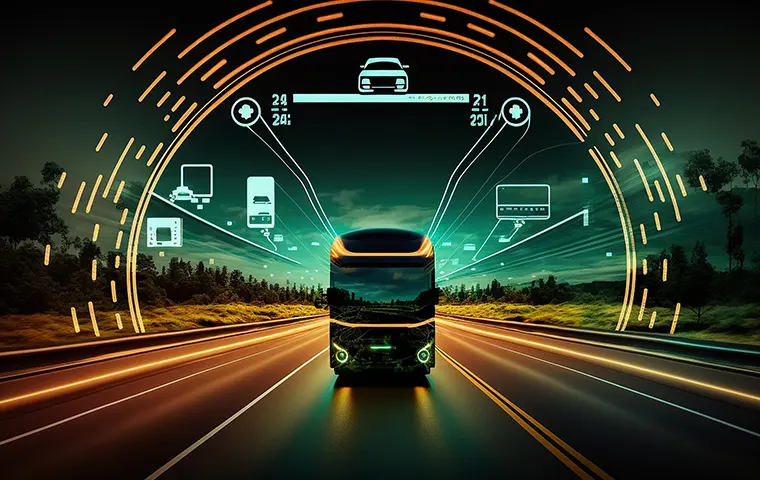For some, being a night owl can be an enjoyable way to burn the midnight oil. For others, it’s a way of life - there’s a whole working world that comes alive in the evening hours while most are fast asleep. Nocturnal fleet operations are one such industry.
Nocturnal fleet operations in the logistics industry are fleets of vehicles that work during the nighttime hours. While many don’t ever think about or even realize how much is going on, a lot is happening behind the scenes.
As is the case with any industry, there are challenges and risks encountered during night-time logistics. This article seeks to shed light on those considerations, and how to ensure safety and efficiency with fleet telematics.
The Importance of Ensuring Safety in Nocturnal Fleet Operations
Night-time logistics differs from daytime logistics in several ways. The former usually experiences less traffic and congestion, making the movement and delivery of goods faster and more efficient. However, it also comes with challenges such as increased safety risks and higher operating costs due to lighting and security needs. Night-time logistics also have to factor in noise regulations in certain areas.
Night-time operations mean drivers must work in the dark, which can reduce visibility and less traffic on the road. Less traffic can mean more efficient movement and service delivery, as well as the ability to service clients who require after-hours delivery or service. However, in the event of an emergency, there are likely to be fewer people around to help.
Drivers working during the night must take into consideration their sleep schedules, and maintain alertness during shifts that may be largely quiet. Scheduling regular breaks can help combat fatigue and avoid issues on the road.
Nocturnal fleet operations often rely on advanced technologies for navigation, communication, and surveillance. Night vision equipment, GPS systems, and communication tools are essential for ensuring the success and safety of operations.
The economic and human consequences of failing to uphold safety standards are great. Failure to comply can result in millions of dollars lost and even lives lost if proper precautions are not taken.
Efficient Procedures to Enhance After-Dark Fleet Safety
Fleet safety is a critical concern, and it becomes even more of a concern after dark due to reduced visibility and increased potential for driver fatigue. Here are some key considerations for ensuring fleet safety during nighttime operations:
Training
Provide drivers with specialized training for nighttime operations. It should cover how to use night vision equipment, ways to combat fatigue, and how to navigate in low-light conditions.
Use of Proper Lighting
Good lighting on vehicles is imperative to safety, during the day or night. Headlights, taillights, and reflective markings should be in good working condition. Consider additional lighting options such as reflective tape to enhance visibility.
Regular Vehicle Maintenance
Conduct regular maintenance checks to ensure that all vehicle lights are in top driving condition. In addition to the regular vehicle performance checks, emphasis should be placed on headlights, brake lights, turn signals, and any other lighting components for vehicles primarily operating during the night.
Driver Fatigue Management
Develop policies and practices to manage driver fatigue. Encourage drivers to take breaks, get sufficient rest, and avoid extended periods of continuous driving. Encourage safe behaviors when out on the road, including checking in with fleet managers.
Emergency Response Plans
Develop and communicate clear emergency response plans. Ensure drivers know what to do in case of breakdowns, accidents, or other unexpected situations that may occur during nighttime operations.
Communication Systems
Maintain reliable communication systems between drivers and the dispatch center. Effective communication is crucial for addressing issues promptly and coordinating responses to unforeseen events.
Weather Considerations
Monitor weather conditions, as they can impact visibility and road conditions. Provide drivers with information on weather updates and advise them to adjust their driving behavior accordingly.
Driver Assistance Programs
Implement driver assistance programs that promote safe driving behaviors and provide incentives for adherence to safety protocols.
The Role of Technology in Enhancing Night-Time Logistics Safety
Technology can contribute to improving driver safety when it comes to night-time logistics and can provide ways to avoid hazards during the dark hours of the night.
Vehicle Safety
Equip vehicles with advanced safety features such as collision avoidance systems, lane departure warnings, and blind spot detection. These technologies can be particularly beneficial in low-light conditions.
Monitoring and Telematics
Use telematics systems to monitor driver behavior and vehicle performance. These systems can provide insights into driver habits, adherence to speed limits, and other safety-related metrics.
Route Planning
Plan routes that are well-lit and avoid poorly lit or high-crime areas. Utilize GPS systems with real-time traffic information to optimize routes and minimize unexpected delays.
The impact of not ensuring safety in after-dark fleet operations can be fatal. With fewer sources of support during nighttime hours, help may not always be at the ready, so drivers must be prepared and alert.
Driving in the Dark
After-dark fleet safety is not just important, it’s crucial to fleet management. Without taking proper precautions, drivers and their vehicles can run into some serious issues.
Be sure your driver is alert and awake while driving, and that the vehicle has been fully serviced and is in proper working condition. Utilize technology to develop a safe environment for after-dark fleet operations to support fleet efficiency and reduce risks.
Fleet managers are encouraged to implement these strategies and share the information with others to keep fleets operating efficiently, and most importantly, safely. Learn how Azuga’s tools can assist fleet operations after dark.








